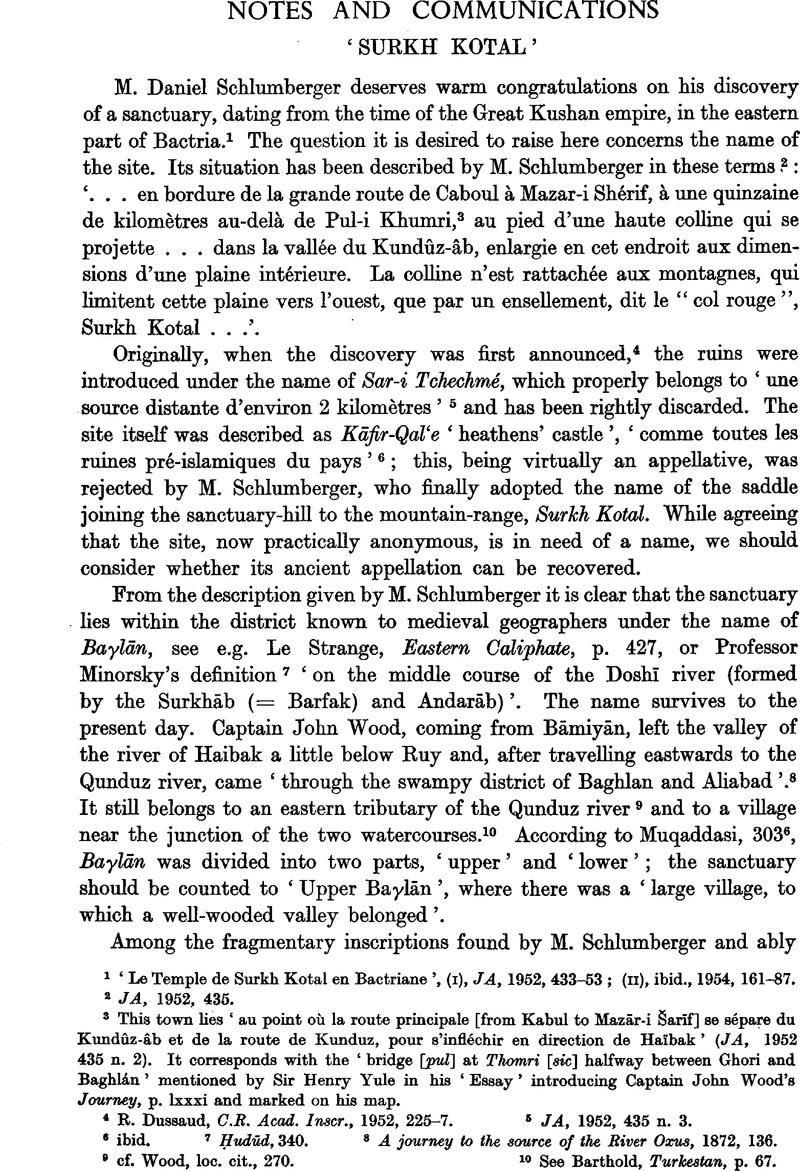No CrossRef data available.
Article contents
Abstract

- Type
- Notes and Communications
- Information
- Bulletin of the School of Oriental and African Studies , Volume 18 , Issue 2 , June 1956 , pp. 366 - 367
- Copyright
- Copyright © School of Oriental and African Studies 1956
References
page 366 note 1 ‘Le Temple de Surkh Kotal en Bactriane’, (I), JA, 1952, 433–53;Google Scholar (II), ibid, 1954, 161–87.
page 366 note 2 JA, 1952, 435.
page 366 note 3 This town lies ‘au point où la route principale [from Kabul to Mazār-i Šarīf] se sépare du Kundûz-âb et de la route de Kunduz, pour s'infléchir en direction de Haībak’ (JA, 1952 435 n. 2). It corresponds with the ' bridge [pul] at Thomri [sic] halfway between Ghori and Baghlán’ mentioned by Sir Henry Yule in his ‘Essay’ introducing Captain John Wood's Journey, p. lxxxi and marked on his map.
page 366 note 4 R. Dussaud, C.S. Acad. Inscr., 1952, 225–7.
page 366 note 5 JA, 1952, 435 n. 3.
page 366 note 6 ibid.
page 366 note 7 xḤudūd, 340.
page 366 note 8 A journey to the source of the River Oxus, 1872, 136.
page 366 note 9 cf. Wood, loc. cit., 270.
page 366 note 10 See Barthold, Turkestan, p. 67.
page 367 note 1 ‘Inscriptions de Surkh Kotal’, J A, 1954, 189–205.
page 367 note 2 XONO, in Inscr. No. 2 (Curiel, pp. 193 sq.), may be = kṡuṇa (kṡuṃ) ‘reign-period, rule’.
page 367 note 3 cf. E. Benveniste, Textes sogdiens, p. 176. The Manichaean Sogdian form referred to in BSOAS, xi, 720, should be read and restored as [č]xwδβγδ'nyy = synagogue; the corresponding Middle Persian word was presumably qwnyšt.
page 367 note 4 If M. Curiel is right in assuming that KIPΔOMI is a complete word, and in his interpretation of it as kirdo-mī ‘made of me’, the second line may mean ‘I made Bagolango …’ or ‘I made [this] sanctuary …’.
page 367 note 5 A commentary on the Amaruśataka [ed. Simon, R., Kiel, , 1893’. The MS which preserves the colophon is No. 321 of 1884–;7 (f. 42) at the B.O.R.I., Poona.Google Scholar




